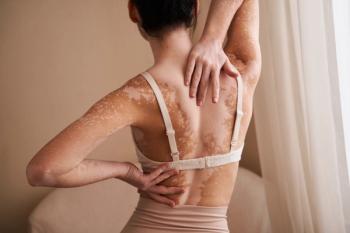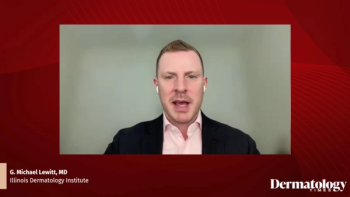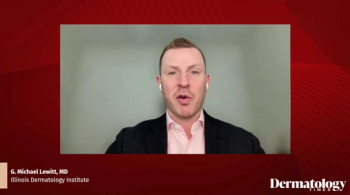
Incyte’s Opzelura Shows Significant Improvements in Phase 3 Vitiligo Trial
Data demonstrates an increase in the proportion of patients achieving regimentation with longer duration of ruxolitinib cream treatment.
Incyte has announced data from its pivotal phase 3 TRuE-V clinical trial program evaluating ruxolitinib cream 1.5% cream (Opzelura) in patients 12 years and older with nonsegmental vitiligo has been published in The New England Journal of Medicine (NEJM).1
The TRuE-V1 and TRuE-V2 trials showed the cream's application resulted in significant facial and total body regimentation, compared to vehicle as shown by greater proportions of patients reaching the facial and total body Vitiligo Area Scoring Index (F-VASI and T-VASI, respectively) endpoints at week 24 versus vehicle, with a higher proportion of patients responding at week 52.
Vitiligo is a chronic autoimmune disease characterized by skin depigmentation that results in the loss of pigment-producing cells known as melanocytes. Overactivity of the Janus Kinase signaling pathway is believed to drive inflammation involved in the pathogenesis and progression of the disease. More than 1.5 million people in the United States have been diagnosed with vitiligo. The onset of symptoms can begin at any age, although initial onset presents in most patients before age 30.
The US Food and Drug Administration approved ruxolitinib in July 2022 for the topical treatment of nonsegmental vitiligo in adult and pediatric patients 12 years and older.
Dermatology Times spoke to Renata Block, MMS, PA-C at Advanced Dermatology and Aesthetic Medicine in Chicago, Illinois about the new data and what this means for the future of treating patients with vitiligo.
Renata Block, MMS, Pa-C: Hi, my name is Renata Block. I'm a dermatology physician assistant from Chicago, Illinois. I am so excited to hear that Incyte has announced data from its pivotal phase 3 TRuE-V clinical trial program evaluating ruxolitinib cream for my patients with vitiligo, specifically nonsegmental vitiligo. Phase 3 studies are exciting because they show 30% of patients are improved or had a 70% improvement with their facial vitiligo. There are 1.3 million patients that have been diagnosed in the United States with vitiligo. It's estimated that there are many more out there. I have a lot of patients coming into the office; they're usually diagnosed before the age of 30. If you have it on the face, it can be really traumatic. Patients try to cover it up and having a novel treatment option that can change their lives and give them confidence is really exciting and rewarding as a physician assistant to be able to provide those treatment options for my patients. So the extension study to me is so important because that kind of gives us real-world experience with the drug. And it really shows if there is continued efficacy with the medication. You know, studies are great, but when we bring the drugs to the real world is really when we see true results. I love the fact that they did the 52-week study; as the data is important to a practitioner. The phase 3 study showed significant repigmentation which gives me a lot of hope; it also gives our patients a lot of hope in getting results. 30% showed at least 75% improvement after 24 weeks. Again, I think the patients will be willing to try the medication and change their lives.
Transcript edited for clarity
References:
1. Rosmarin D, Passeron T, Pandya AG, et al; TRuE-V Study Group. Two Phase 3, Randomized, Controlled Trials of Ruxolitinib Cream for Vitiligo. N Engl J Med. 2022 Oct 20;387(16):1445-1455. doi:10.1056/NEJMoa2118828PMID: 36260792.
Newsletter
Like what you’re reading? Subscribe to Dermatology Times for weekly updates on therapies, innovations, and real-world practice tips.


















